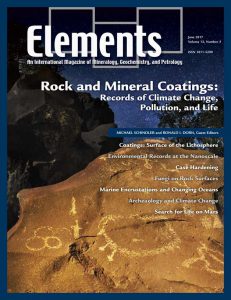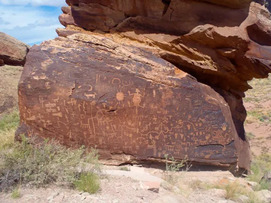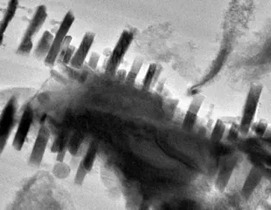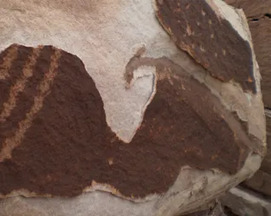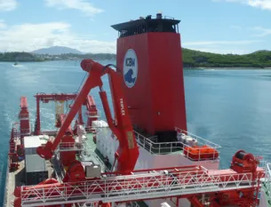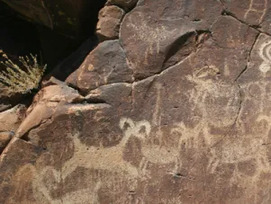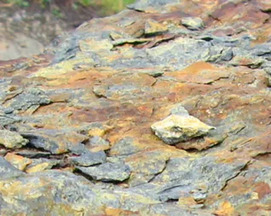
Rock and Mineral Coatings
Records of Climate Change, Pollution, and Life
Michael Schindler and Ronald I. Dorn – Guest Editors
Table of Contents
Coatings result from the wide variety of reactions and/or processes that occur at the interface between the lithosphere and the biosphere, hydrosphere, and atmosphere. Such coatings are biochemically, mineralogically, and isotopically complex and have the potential to record changes in their immediate environment. The transition between a coating and its underlying host is abrupt and defined by a sharp interface at the nanoscale. Articles in this issue highlight new and exciting research in the field of coatings, focusing on coatings formed in deserts, soils, sediments, oceans, and on rocks from Mars.
Analab
Australian Scientific Instruments (ASI)
CAMECA
Excalibur Mineral Corporation
IsotopX
National Electrostatics Corp.
ProtoXRD
Rigaku
Savillex
Selfrag
Volume 13, Number 4 (August) • Boron: Light and Lively
GUEST EDITOR: Edward Grew
Fifth in the periodic table, boron is a “light” element whose origin has puzzled astronomers as it is not created in stars. It is “lively”, being an essential element for plants, and having medicinal properties, which has stimulated synthesis of organic compounds containing boron. Borates such as colemanite are thought by some to have stabilized ribose, an essential component of ribonucleic acid and critical for the self-assembly of prebiotic organic compounds to constitute life, but others have proposed that ribose was stabilized by borate in solution. Boron isotopes provide insight on the processes responsible for creation of the continental crust, and have use as a proxy for paleoclimate. Extreme concentrations of boron result in economic evaporitic deposits, and thus water-soluble boron minerals, notably borax, have been among the most accessible of useful compounds to humankind, even in antiquity.
- How Volcanoes Work (February 2017)
- Sulfides (April 2017)
- Rock and Mineral Coatings: Records of Climate Change, Pollution, and Life (June 2017)
- Boron: Light and Lively (August 2017)
- Mineral Resources and Sustainable Development (October 2017)
- Layered Intrusions: Natural Laboratories for Magma Chamber Processes (December 2017)


